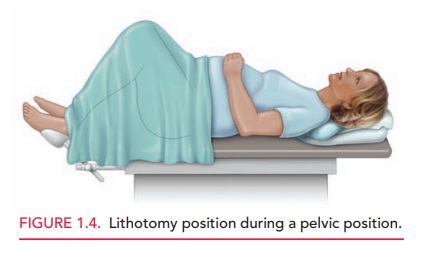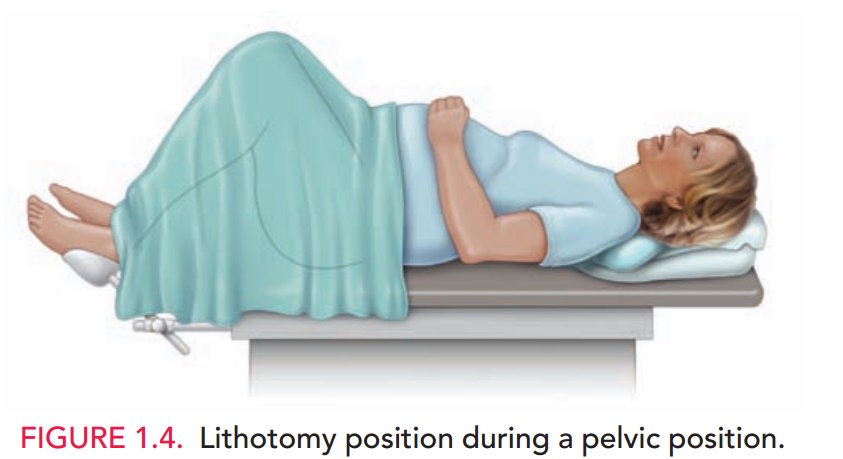Chapter: Obstetrics and Gynecology: The Woman’s Health Examination
Position of the Patient and Examiner

POSITION OF THE PATIENT AND EXAMINER
The patient is asked to sit at
the edge of the examination table and an opened draping sheet is placed over
the patient’s knees. If a patient requests that a drape not be used, the
request should be honored.
Positioning the patient for
examination begins with the elevation of the head of the examining table to
approx-imately 30 degrees from horizontal. The physician or an assistant should
help the patient assume the lithotomyposition
(Fig. 1.4). The patient should be asked to lieback, place her heels in the
stirrups, and then slide down to the end of the table until her buttocks are
flush with the edge of the table. After the patient is in the lithotomy
po-sition, the drape is adjusted so that it does not obscure the clinician’s
view of the perineum or obscure eye contact be-tween patient and physician.

The physician should sit at the
foot of the examining table, with the examination lamp adjusted to shine on the
perineum. The lamp is optimally positioned in front of the physician’s chest a
few inches below the level of the chin, at approximately an arm’s length
distance from the per-ineum. The physician should glove both hands. After
con-tact with the patient, there should be minimal contact with equipment such
as the lamp. Removing the speculum from the drawer prior to touching the
patient will help to prevent contamination of other speculums and equipment
(e.g., table, drawers, and lamp).
Related Topics